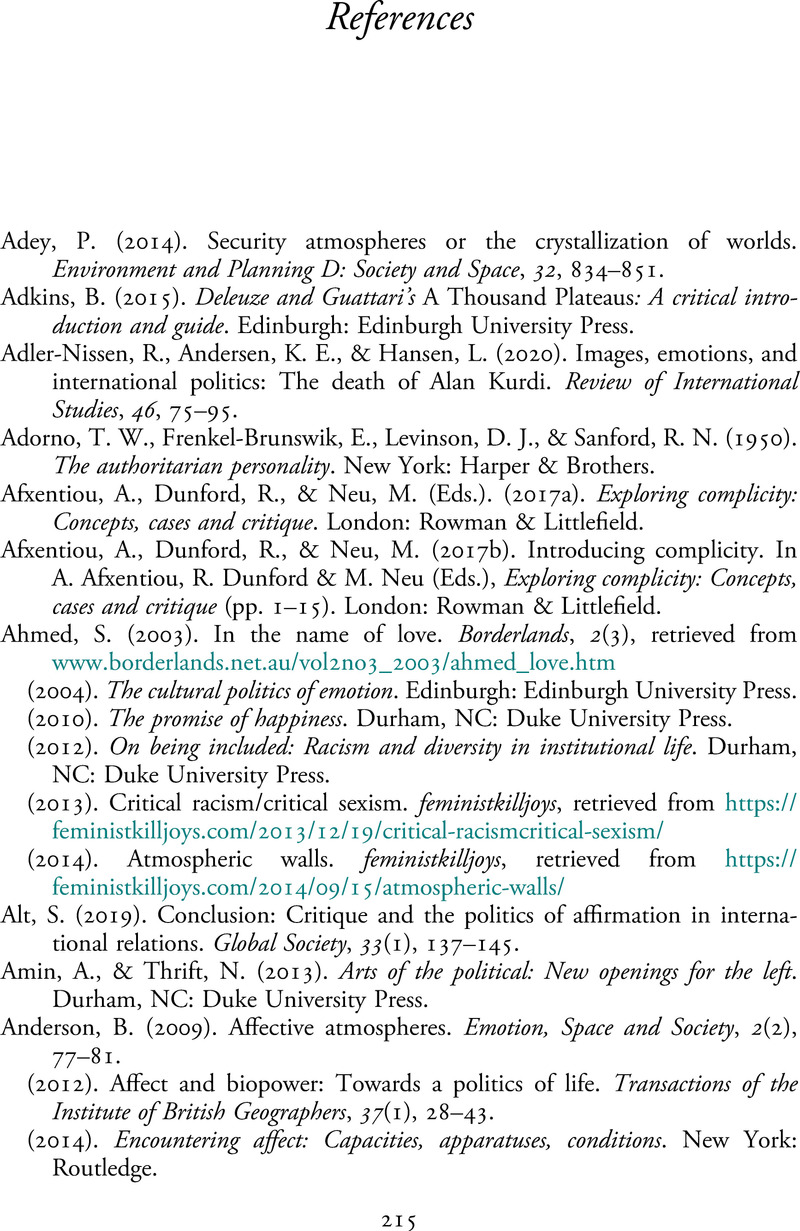Book contents
- Affect and the Rise of Right-Wing Populism
- Affect and the Rise of Right-Wing Populism
- Copyright page
- Dedication
- Contents
- Acknowledgments
- Permissions
- Introduction
- Part I Scanning the Political Landscape of Right-Wing Populism
- Part II Renewing Democratic Education
- Part III Inventing Affective Pedagogies for Democratic Education
- References
- Index
- References
References
Published online by Cambridge University Press: 17 April 2021
- Affect and the Rise of Right-Wing Populism
- Affect and the Rise of Right-Wing Populism
- Copyright page
- Dedication
- Contents
- Acknowledgments
- Permissions
- Introduction
- Part I Scanning the Political Landscape of Right-Wing Populism
- Part II Renewing Democratic Education
- Part III Inventing Affective Pedagogies for Democratic Education
- References
- Index
- References
Summary

- Type
- Chapter
- Information
- Affect and the Rise of Right-Wing PopulismPedagogies for the Renewal of Democratic Education, pp. 215 - 239Publisher: Cambridge University PressPrint publication year: 2021



